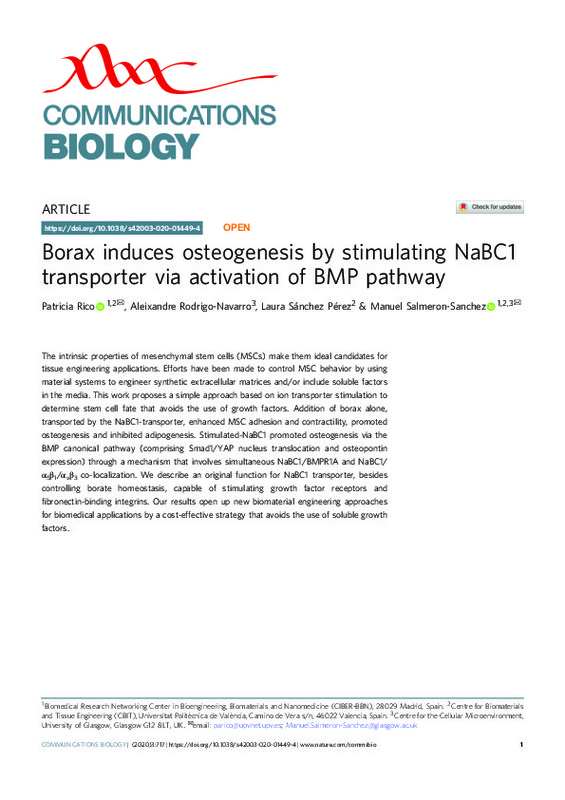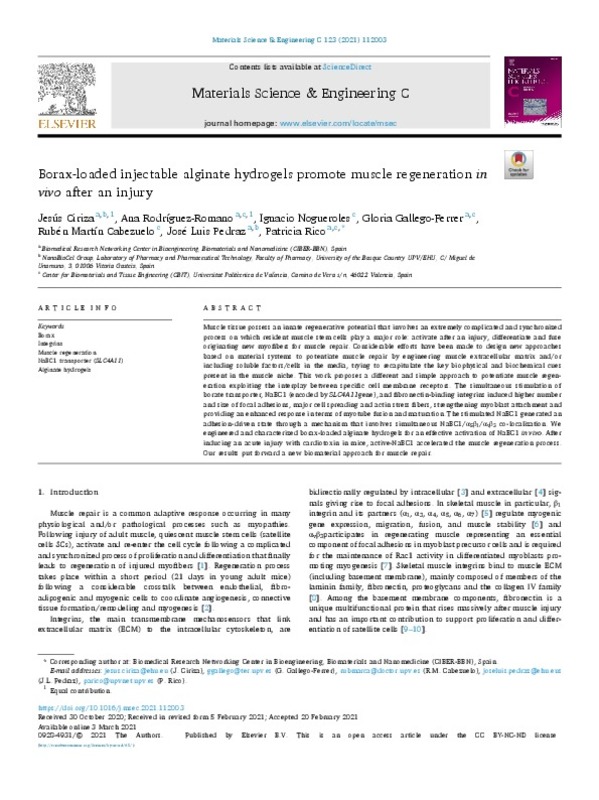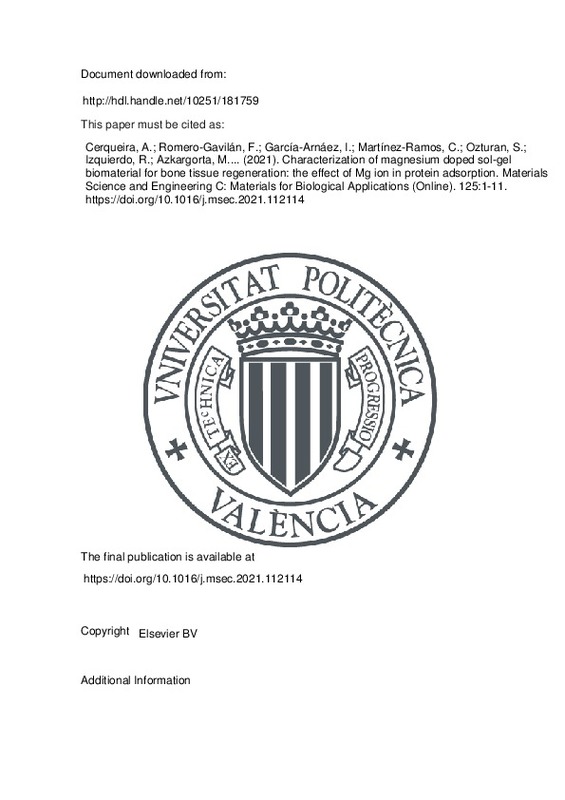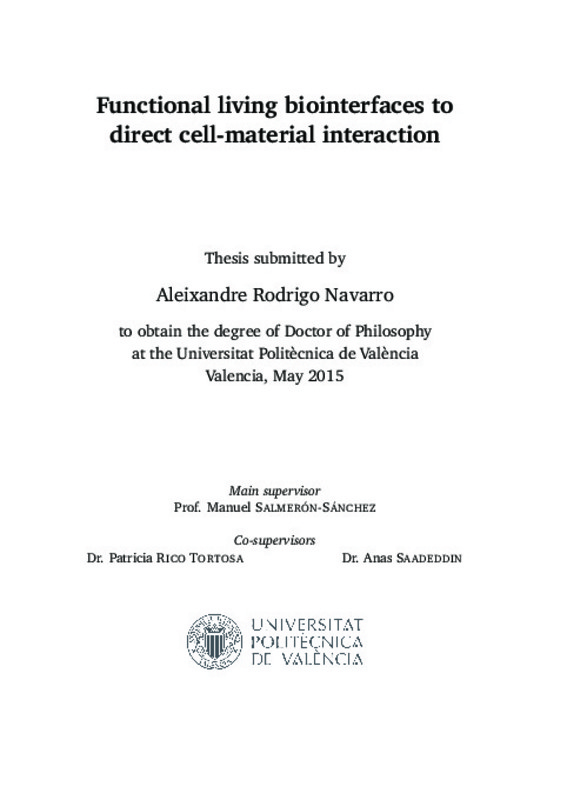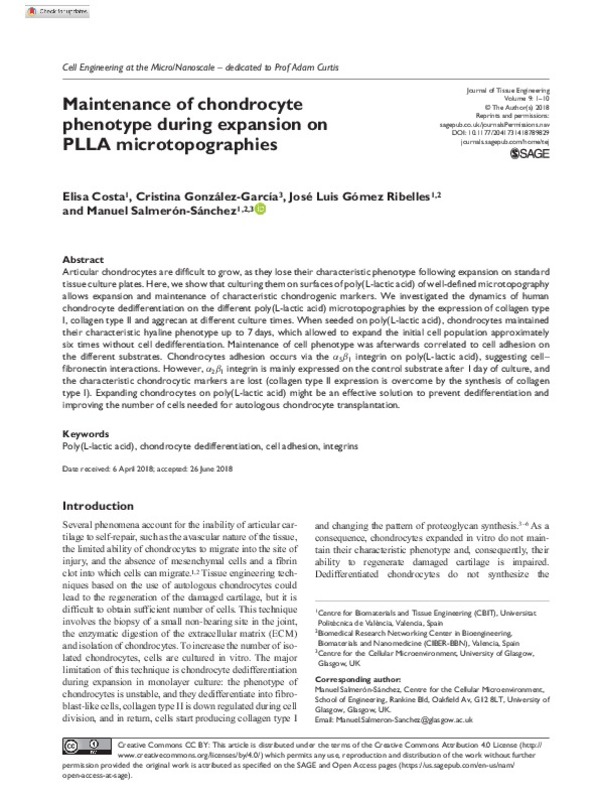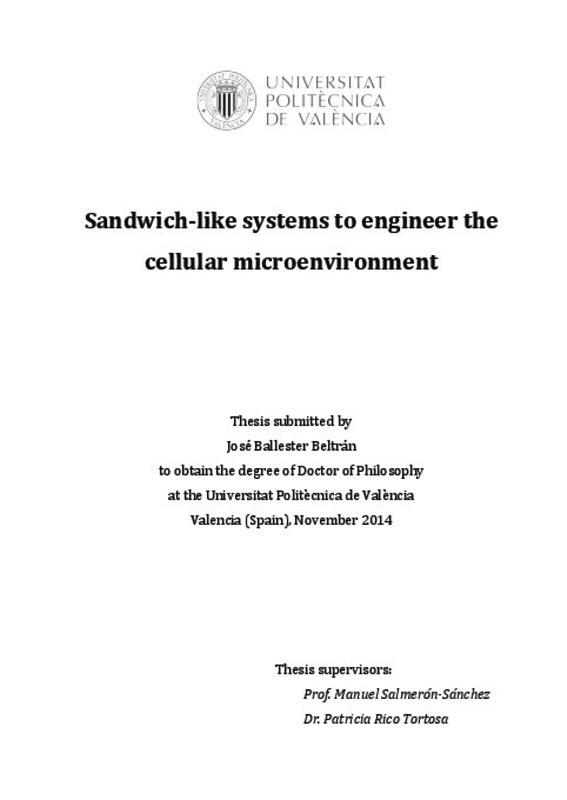

Listar por palabra clave "Integrins"
RiuNet: Repositorio Institucional de la Universidad Politécnica de Valencia
- RiuNet repositorio UPV
- :
- Listar por palabra clave
JavaScript is disabled for your browser. Some features of this site may not work without it.
Buscar en RiuNet
Listar
Mi cuenta
Ayuda RiuNet
Admin. UPV
Listar por palabra clave "Integrins"
Mostrando ítems 1-10 de 10
-
Miranda Coelho, Nuno; González García, Cristina; Salmerón Sánchez, Manuel; Altankov, George (Wiley-Blackwell, 2011-07)Apart from the paradigm that cell-biomaterials interaction depends on the adsorption of soluble adhesive proteins we anticipate that upon distinct conditions also other, less soluble ECM proteins such as collagens, associate ...
-
Rico Tortosa, Patricia María; Rodrigo Navarro, Aleixandre; Sánchez-Pérez, Laura; Salmerón Sánchez, Manuel (Springer Nature, 2020-11-27)[EN] The intrinsic properties of mesenchymal stem cells (MSCs) make them ideal candidates for tissue engineering applications. Efforts have been made to control MSC behavior by using material systems to engineer synthetic ...
-
Ciriza, Jesús; Rodriguez-Romano, Ana; Nogueroles, Ignacio; Gallego-Ferrer, Gloria; Martín Cabezuelo, Rubén; Pedraz, José Luis; Rico Tortosa, Patricia María (Elsevier BV, 2021-04)[EN] Muscle tissue possess an innate regenerative potential that involves an extremely complicated and synchronized process on which resident muscle stem cells play a major role: activate after an injury, differentiate and ...
-
Cerqueira, Andreia; Romero-Gavilán, Francisco; García-Arnáez, Iñaki; Martínez-Ramos, Cristina; Ozturan, Seda; Izquierdo, Raúl; Azkargorta, Mikel; Elortza, Félix; Gurruchaga, Mariló; Suay, Julio; Goñi, Isabel (Elsevier BV, 2021-06)[EN] Magnesium is the fourth most abundant element in the human body with a wide battery of functions in the maintenance of normal cell homeostasis. In the bone, this element incorporates in the hydroxyapatite structure ...
-
Gamboa Martínez, Tatiana Carolina; Gómez Ribelles, José Luís; Gallego-Ferrer, Gloria (SAGE Publications (UK and US), 2011-09)A hybrid scaffold was obtained by the deposition of a thin network of submicron fibrin fibrils on the microporous walls of a macroporous poly(L-lactide) (PLLA) three-dimensional structure. The fibrin coating is homogeneous ...
-
Rodrigo Navarro, Aleixandre (Universitat Politècnica de València, 2015-06-10)[EN] This thesis deals with the development of a living biointerface between synthetic substrates and living cells to engineer cell-material interactions for tissue engineering purposes. This living biointerface is made ...
-
Costa Martínez, Elisa; González García, Cristina; Gómez Ribelles, José Luís; Salmerón Sánchez, Manuel (SAGE Publications, 2018-08-06)[EN] Articular chondrocytes are difficult to grow, as they lose their characteristic phenotype following expansion on standard tissue culture plates. Here, we show that culturing them on surfaces of poly(L-lactic acid) of ...
-
Salmerón Sánchez, Manuel; Rico Tortosa, Patricia María; Moratal Pérez, David; Lee, Ted T.; Schwarzbauer, Jean E.; Garcia, Andres J. (Elsevier, 2011)Fibronectin (FN) is a ubiquitous extracellular matrix protein (ECM) protein that is organized into fibrillar networks by cells through an integrin-mediated process that involves contractile forces. This assembly allows for ...
-
Ballester Beltrán, José (Universitat Politècnica de València, 2015-03-20)Abstract While most of the in vitro cultures are carried out on bi-dimensional (2D) substrates, most of the in vivo extracellular matrices are threedimensional (3D). Consequently cells behave differently on 2 ...
-
Rico Tortosa, Patricia María; Rodrigo Navarro, Aleixandre; La Peña Del Rivero, Marcos De; Moulisova, Vladimira; Costell, Mercedes; Salmerón Sánchez, Manuel (John Wiley & Sons, 2018-10-30)[EN] Boron ion is essential in metabolism and its concentration is regulated by ion-channel NaBC1. NaBC1 mutations cause corneal dystrophies such as Harboyan syndrome. Here we propose a 3D molecular model for NaBC1 and ...
Mostrando ítems 1-10 de 10

Universitat Politècnica de València. Unidad de Documentación Científica de la Biblioteca (+34) 96 387 70 85 · RiuNet@bib.upv.es



